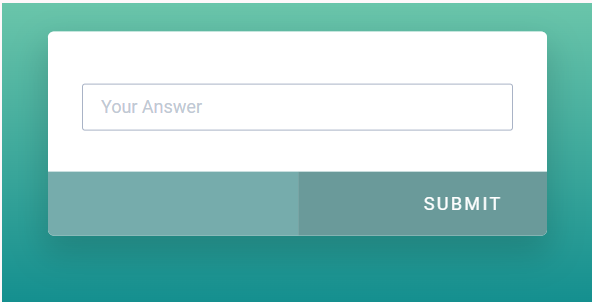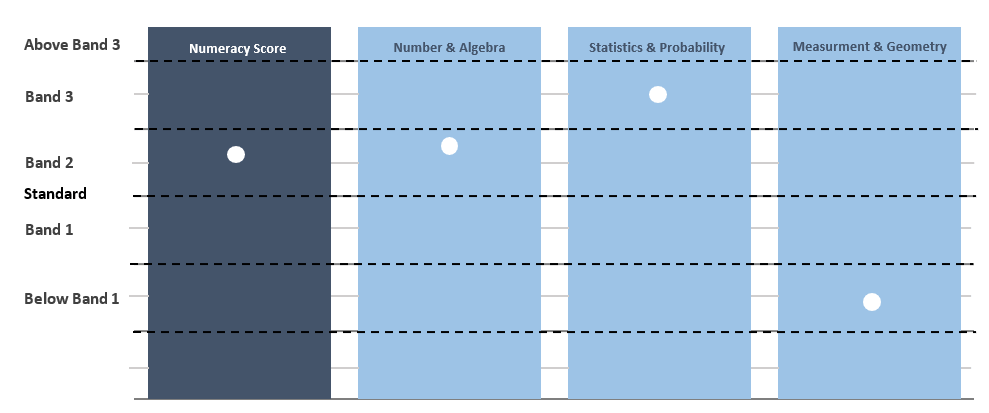 Ace One of the Biggest Obstacles Before Becoming a Teacher – The Literacy and Numeracy Test
Ace One of the Biggest Obstacles Before Becoming a Teacher – The Literacy and Numeracy Test
LANTITE is one of the last obstacles you must pass before you can become a teacher in Australia.
Taking the Literacy and Numeracy Test may be stressful for you, especially if you haven’t touched the tested materials since high school.
We’re here to tell you that with the right preparation, you can easily pass the LANTITE test even if you haven’t practised math and literacy for a decade.
From our 27+ years of experience in preparing applicants for assessment tests, we know that even practising for as little as 3 hours the day before the test can give you the edge you need to succeed.
So, let’s get started.
- 1 full LANTITE-style numerical practice test
- 1 full LANTITE-style literacy practice test
- 50+ numerical practice drills
- 35+ literacy practice drills
- Literacy skills video tutorial
- Numerical skills study guides
What Is the Literacy and Numeracy Test?
The LANTITE Test is comprised of two sections, namely Literacy and Numeracy. Please note that these are not two separate tests, but rather a single test divided into two sections.
Literacy Section
This segment includes both reading and technical writing questions, so here is what you need to know.
Reading: The reading portion of the test includes several text formats and types that our PrepPack™ will fully acquaint you with. Here is the low down:
Text formats in Proportion:
- 45-55% Continuous- sentences are organised into paragraphs, pages, sections and chapters.
- 20-30% Non-continuous- info is organised in graphic or diagrammatic forms (e.g. lists, tables, graphs, maps or forms).
- 10-20% Mixed- half, or less than half, of the content, is non-continuous.
Text-types in Proportion:
- 45–55% - Descriptive, informative and persuasive
- 25–35% - Procedural, regulatory and technical
- 15-25% - Narrative
Now that you have a basic understanding of what to expect, here is an outline of the expected implementation of information.
- Accessing and identifying- locating one or more pieces of information in the text.
- Integrating and Interpreting- relating parts of the text to each other, understanding implied meanings within the text, understanding the text as a whole.
- Evaluating and Reflecting- relating the text to knowledge, ideas or values external to the text.
Technical Writing Section
The Technical Writing Section of the test is comprised of four primary components: Let’s look at each component to understand what you will be tasked to accomplish:
20-30% - Syntax and grammar: After reading a short text, you will be tasked with identifying errors or writing the correct form of verbs, subjects, pronouns and punctuation in the text.
20-30% - Spelling: These questions will also use short text and challenge you to identify the correct form of commonly misspelled words, or words of irregular forms, that are likely to be part of a teachers vocabulary.
20-30% Word-usage: These questions come on the heels of either a single sentence or long text, and you must identify the word closest in meaning to any given word.
20-30% Text organisation – This section can use any size length text, instructing you to restructure for coherence, insert phrases correctly into various segments of the tests, and point out where phrases or words are ambiguously used.
Numeracy Section
Three components comprise the numeracy section (both Calculator and Non-Calculator version):
- Numbers and Algebra - basic operations, proportional reasoning, ratios, fractions, conversions, percentages, decimals, scientific notation, budgeting, interest calculations, simple formulas, calculation of GST, etc.
- Statistics and Probability - interpreting mathematical information given in graphs and tables, reading and interpreting statistic data, comparing data sets or statistics, calculating probabilities, etc.
- Measurement and Geometry - timetabling and scheduling, travel calculation (speed/time/distance), geometry, symmetry, quantities, area and volume calculations, correctly using a given routine formula, unit-conversion, correctly reading and using maps, plans, scales, and bearings, etc.
Three numeracy processes are evaluated in the following ways:
- Identifying numerical information and meaning in texts, charts, tables etc.
- Applying mathematical knowledge and problem-solving processes
- Interpreting, evaluating and correctly representing numerical data
How Long Does the Literacy and Numeracy Test Take?
Each section of the test has an equal allocation of time and number of questions. For both the literacy and numeracy section, you will have 2 hours to answer 65 questions. Thus, the entire test will take 4 hours, including 130 questions in total.
How Do You Prepare for the LANTITE Test
Preparing for the LANTITE Test can certainly be a challenge, as can finding serious and comprehensive studying materials and practice tests. Many previous test takers have even described the official ACER LANTITE practice questions as “a joke” and using materials from the official ACARA are not in-depth enough to provide serious studying opportunity.
It is for this reason that JobTestPrep has filled the void by developing a LANTITE practice test that not only mirrors the real test, but also provides you with full explanations to each answer and allows you to take the test in real-time or at your own pace.
Is the Literacy and Numeracy Test Hard?
Many people do fail the test, so here are some tips to help you begin your studies
Literacy Reading section Tip:
Before actually reading the text, first, read the question and go back and look for the answer. This will save you time and give you an understanding of what to look for.
Literacy Writing Section Tip:
Make sure to come into the test with a vast vocabulary, grammar, and understanding of syntax – pay attention to ‘its’ vs ‘it’s’ or ‘they’re’ vs ‘their’, and so on.
Numeracy Section Tip:
It is important to focus on really understanding the method behind any given formula; once you understand the principle, the application will become much easier.
What Percentage Do You Need to Pass the LANTITE Test?
Scoring in the top 30% percentile of test-takers is essential for a passing grade.
What Happens If You Fail the Literacy and Numeracy Test?
You are only allowed a total of three opportunities to pass the test. In the event you do not pass the test after the third attempt, you have effectively ended your teaching career in Australia.
To make sure you pass, you need a practice test that provides a full explanation of both the literacy and numeracy sections, as you must pass both sections.
Literacy and Numeracy Test Sample Questions
LANTITE - Literacy
1) The sentence below contains one misspelt word.
The interventions prooved effective in reducing bullying.
Type the word as it should appear (in lowercase letters without punctuation).

The correct answer is proved.
The word proved was spelled incorrectly as 'prooved' in the sentence. To prove is an irregular verb, which means that it does not take on the regular spelling patterns of regular verbs in the past simple or past participle. Regular verbs in the past simple tense follow the pattern of adding either d, ed or ied to the end of the word. For example, close = closed, play = played, marry = married. In this case, the question conjugates the infinitive 'prove' in the past simple conjugation 'proved'.
LANTITE - Numerical
2) BICYCLE'S RPM
Ron and Harvard are participating in a bike race. Both Ron's and Harvard's velocities (in km/h) are presented in the speedometers below.

Both Ron and Harvard ride professional bikes with wheel diameters of 70 cm and 60 cm respectively. Whose RPM measurement is greater, and by how much?
*Velocity units are km per hour (km/h).
*RPM to km/h Conversion Formula is: v = d x RPM x 0.001885, in which d represents the wheel’s diameter in cm.
The correct answer is (D) - Harvard, by 96 RPMs.
Looking at both Ron and Harvard’s speedometers, it is important to remember that they indicate each of the contestants' velocities, measured in km/h. Ron's speedometer shows that he rides at 34 km/h and Harvard's speedometer shows that he rides at 40 km/h.
When extracting the data from the question, it is beneficial to organize it in a simple and easy to handle way:
*At all times, it's important to notice the measurement's units in order to solve the question correctly.
According to the RPM to km/h Conversion Formula: v = d x RPM x 0.001885 In order to calculate each contestant's RPM, extract from the formula:
RPM = v/(d*0.001885)
Now, substitute the variables with the data given in the question: Ron's RPM = 34/(70*0.001885) = 257.67 Harvard's RPM = 40/(60*0.001885) = 353.67 As can be seen, Harvard's RPM measurement is bigger than Ron's.
Calculate by how much Harvard's RPM measurement is bigger than Ron's: 353.67 – 257.67 = 96 RPMs.
LANTITE Test Dates
There will be four test windows held in 2022. Registration and test window dates for 2022 are provided below.
| Test Window | Registration Opens* | Registration closes | Test window dates** |
| 2022 Window 1 | 11 January 2022 | 24 January 2022 | 14 February 2022 - 27 February 2022 |
| 2022 Window 2 | 1 April 2022 | 14 April 2022 | 9 May 2022 - 22 May 2022 |
| 2022 Window 3 | 5 July 2022 | 18 July 2022 | 8 August 2022 - 21 August 2022 |
| 2022 Window 4 | 27 September 2022 | 10 October 2022 | 31 October -2022 - 13 November 2022 |
*Registrations open between 10am-12pm on the first day and close at 5pm AEST/AEDT on the last day for all test windows.
**The remote proctoring test period ends 3 days (72 hours) prior to the conclusion of each test window. Please see the remote proctoring test sitting requirements for more information about test scheduling.
LANTITE – Results and Scoring

*In the Numeracy section, in addition to scoring each of the section's components, scores will be given for each of its sections - Calculator available and Non-calculator.
This information indicates not only whether you passed the test by meeting the standard, but also presents you with your areas of strength and weakness. Therefore, in case your 'Literacy' or 'Numeracy' score is below the standard, the sections' component-scores can provide you with focus areas when studying for the next LANTITE.
Note! It is possible to have a section's LANTITE score that meets or exceeds the standard without achieving the standard in every component of that section. For example, on the Numeracy section a student could receive a 'Below standard' (Band 1) score on the Numbers & Algebra component yet still receive a 'meets and exceeds the standard' (Band 2) score on the Numeracy section because of stronger performance on other topics.


